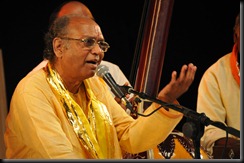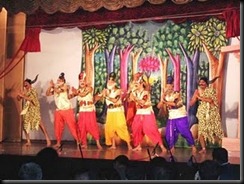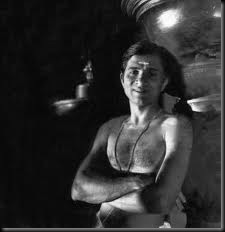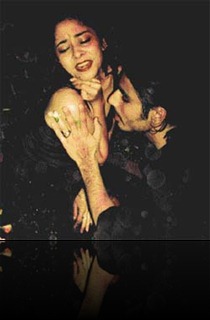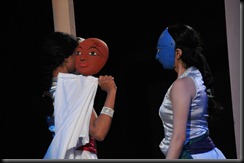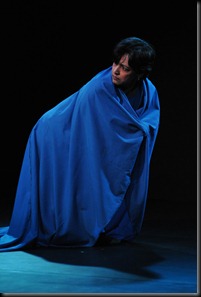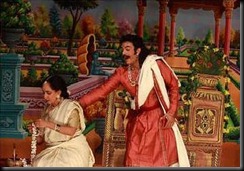Desh Parv has been divided into five segments namely Kul Varnika ( Commonwealth literature in performance), Desaj (Diverse expressions of the nations), Nritya Rupa (Dances of India) Natya Darshan (A vision of theatre in India), Sangeet Marg ( Paths of Indian Music) encompassing all forms of performing arts. The details about the five art forms are as:
Kul Varnika : 11:00 am – 1:00 pm Meghdoot III (Entry ticket)
Navtej Singh Johar, Delhi:
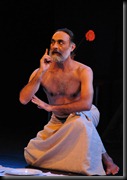
Navtej Singh Johar bases his presentation on Doris Lessing’s novel, “The grass is singing”. This novel, written almost entirely in the form of an extended flashback, details the mental, spiritual, financial and marital disintegration of Dick and Mary Turner, white farmers struggling to make a living off a sun-baked farm in South Africa.
Priti Patel, Kolkata:
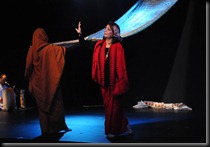 Priti Patel’s presentation is based on the verses of Bangladesh’s Poet Jasimuddin’s Nakshi Kanthar Math. The work has been hailed a masterpiece because of its simplicity, its charm and its deep humanity. In this saga of loss and separation, hunger and frustration, the villager displays the values of constancy, courage, love and hope. There are few who can dignify, as Jasimuddin does, the common folk by the quality of their love, and few who can enhance a poem by its power to portray that love.
Priti Patel’s presentation is based on the verses of Bangladesh’s Poet Jasimuddin’s Nakshi Kanthar Math. The work has been hailed a masterpiece because of its simplicity, its charm and its deep humanity. In this saga of loss and separation, hunger and frustration, the villager displays the values of constancy, courage, love and hope. There are few who can dignify, as Jasimuddin does, the common folk by the quality of their love, and few who can enhance a poem by its power to portray that love.
Nritya Rupa: 5.30 pm Meghdoot I (Entry free)
ODISSI: Presented by Ranjana Gauhar’s group
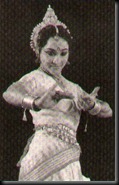 Odissi dance belongs to the State of Orissa in eastern India, where it was performed in its rudimentary form as part of temple service by maharis or female temple servants. This traditional dance was remoulded as a theatre art towards the middle of the twentieth century incorporating elements from various other forms of dance in Orissa and also representations of dance in Orissa’s medieval sculpture, painting, and literature. In its remodelled form, Odissi dance has spread quickly across the country and thence the wider world.
Odissi dance belongs to the State of Orissa in eastern India, where it was performed in its rudimentary form as part of temple service by maharis or female temple servants. This traditional dance was remoulded as a theatre art towards the middle of the twentieth century incorporating elements from various other forms of dance in Orissa and also representations of dance in Orissa’s medieval sculpture, painting, and literature. In its remodelled form, Odissi dance has spread quickly across the country and thence the wider world.
The Vaishnava faith of Orissa is at the heart of Odissi dance and the lore of Krishna and Radha supplies its episodic content. Love lyrics from Jayadeva's Sanskrit work Gitagovindam thus have pride of place on the Odissi dance repertoire, together with songs in Oriya by medieval and early modern poets such as Upendra Bhanja and Banamali Das. These are interpreted by the dancer employing a grammar of hand gestures of hastas. A codified footwork of padabheda, gaits and walks termed chali, and spins or bhramaris are other components of the technique of Odissi dance. Created as it has been partly from sculptural representations of dance, Odissi in its performance often appears sculpturesque, particularly in its graceful tribhangis or the firm, square stance called chowk. The movements are soft and graceful. The dancer is supported by a singer, a drummer who plays the Pakhawaj, and accompanies on the flute and plucked strings. The dance conductor also sits with the musicians reciting rhythmic syllables and keeping time with his cymbals.
Odissi is being presented by the Utsav Cultural Society and is performed by Ranjana Gauhar’s disciples. Ranjana Gauhar is a leading dancer who has performed extensively and choreographed several dance-dramas based on Odissi and Chhau dances. She is also a dance teacher who has been a visiting lecturer at the Summer Academy, Berlin. She has produced several documentaries on dance. The Utsav Cultural Society, founded by Ranjana Gauhar, is a non-commercial, non-governmental cultural institution aiming to preserve, promote, and propagate the performing arts of India
MOHINIATTAM: Presented by Trikala Gurukulam
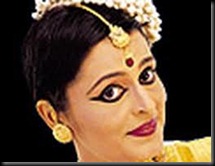 Mohiniattam, which belongs to Kerala in southern India, takes its name from the mythic enchantress Mohini. It is a dance of feminine grace, and has grown out of performances connected with Kerala's temples. The prince Swati Tirunal of Travancore, a patron of arts and an artist himself, was one of the chief architects of the dance in the nineteenth century, and composed a large repertoire of songs which accompany the performance. Characterized by femininity, Mohiniattam has no heavy steps or rhythmic tension: the footwork is gentle, soft, and sliding. The dancer's body rises and falls with an easy grace, with the emphasis mainly on the torso. Restraint in movement is the hallmark of the dance. Mohiniattam uses rhythms that are special to Kerala; the rhythmic syllables used are those of the Maddalam, a drum which provides accompaniment for female roles in the Kathakali theatre. The main percussion instrument in the performance is the Edakka. The other musical instruments are the Mridangam, the Veena, the flute, and the Kuzhitalam or cymbals. The oscillations in the melody accord with the movements in the dance.
Mohiniattam, which belongs to Kerala in southern India, takes its name from the mythic enchantress Mohini. It is a dance of feminine grace, and has grown out of performances connected with Kerala's temples. The prince Swati Tirunal of Travancore, a patron of arts and an artist himself, was one of the chief architects of the dance in the nineteenth century, and composed a large repertoire of songs which accompany the performance. Characterized by femininity, Mohiniattam has no heavy steps or rhythmic tension: the footwork is gentle, soft, and sliding. The dancer's body rises and falls with an easy grace, with the emphasis mainly on the torso. Restraint in movement is the hallmark of the dance. Mohiniattam uses rhythms that are special to Kerala; the rhythmic syllables used are those of the Maddalam, a drum which provides accompaniment for female roles in the Kathakali theatre. The main percussion instrument in the performance is the Edakka. The other musical instruments are the Mridangam, the Veena, the flute, and the Kuzhitalam or cymbals. The oscillations in the melody accord with the movements in the dance.
Mohiniattam is being presented by Trikalaa Gurukulam, an institution established by Deepti Omcherry Bhalla, a dancer based in Delhi. Deepti Bhalla learnt Mohiniattam under Kalyanikutty Amma, and has presented recitals at leading dance venues. Awarded a Ph.D for her thesis on the Sopana music of Kerala, she is currently Professor of Carnatic music at Delhi University. Trikalaa Gurukulam is perhaps the only institute in Delhi which provides training in both Carnatic classical music and the Sopana Music of Kerala. The institute provides training in Mohiniattam also. Trikalaa’s dance repertory has given several group presentations in important festivals like the Konark Fest in Bhubaneshavar, Chamba Shastrabdi fest in Chamba, etc. The artistes performing Mohiniattam are Deepti Omchery Bhalla, Swapna Nair, Lavanya Devi, Priya Bhaskar, Aishwarya Radhakrishnan, Amrita Vijayan. The accompanying members of the orchestra are as follows: Vocal – Radhakrishnan, Mridangam – Vetri Bhupati, Eddaikka – Sateesh Poduval, Veena – Geeta Mohan.
Desaj : 6:00 pm Kathak Kendra North Delhi (Entry free)
PUPPETRY: Aakar Puppet Theatre Presented by Putul Kendra
Natya Darshan : 6.30 pm Shri Ram Centre Auditorium (Entry ticket)
SHAKUNTALAM (Sanskrit)
Written by Mahakavi Kalidasa
Direction: Kavalam Narayan Panikkar
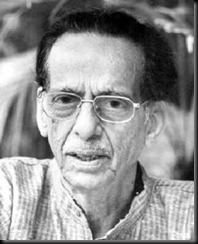 Abhijnana Shakuntalam of Kalidasa is based on the Sakuntalopakhyana of the epic Mahabharata. The original play is in seven acts. The present production is an abridged one depicting the love between Dushyanta, king of Hastinapura, and Sakuntala. The scene of the first four acts takes place in sage Kanva’s hermitage at the foot of the Himalayas. Later the scene shifts to Dushyanta’s palace.
Abhijnana Shakuntalam of Kalidasa is based on the Sakuntalopakhyana of the epic Mahabharata. The original play is in seven acts. The present production is an abridged one depicting the love between Dushyanta, king of Hastinapura, and Sakuntala. The scene of the first four acts takes place in sage Kanva’s hermitage at the foot of the Himalayas. Later the scene shifts to Dushyanta’s palace.
King Dushyanta is in the forest with his retinue, engaged in a royal hunt. As he is about to shoot a deer with his arrow, an ascetic asks him to refrain from it, informing him that the animal belongs to the ashrama or hermitage of the sage Kanva. In the ashrama he comes across three girls watering flowering plants. At first sight, the king falls in love with one of them, Sakuntala, the adopted daughter of Kanva. The king determines to encamp there, drawn by his passion. Sakuntala is also struck by the grace and charm of the visitor.
The king is introduced in a love-sick condition by his bosom friend Madhavya, the Vidushaka, to Sakuntala. In the ensuing scene, we find the hero and the heroine in love.
There follows the union of the lovers in the traditional gandharva marriage, and the king adorns Sakuntala’s finger with a signet ring which establishes his identity.
After the King leaves her to go to his kingdom, Sakuntala is alone in the hermitage, lost in thoughts about her lover. Thus brooding, she fails to offer proper hospitality to sage Durvasa, who visits the hermitage as a guest. The hot-tempered sage curses her that she would be forgotten by the person whom she was contemplating. Her friends Anasuya and Priyamvada plead Sakuntala’s absent-mindedness. Then the sage modifies the curse by saying that the curse would cease to have any effect on Sakuntala’s producing some token of recognition.
Kanva approves the gandharva marriage and sends Sakuntala to her husband with Gowtami and two of his disciples.
At the royal palace, the king denies all knowledge of his relationship with Sakuntala. Sakuntala fails to arouse the king’s memory. As a last resort, she wants to show him the signet ring which was given to her at the time of parting; but unfortunately it had slipped off from her finger during the journey. Finally she is driven out of the court.
Finally, the lost ring is recovered and the king regains his memory of Sakuntala. Sakuntala and the King are united once again.
This play is directed by Kavalam Narayana Panikkar, a major interpreter of Sanskrit drama on the modern stage. It is presented by the theatre group Sopanam of Thiruvananthapuram, Kerala, founded by him.
Director’s Note:
The first textual reference Mrgaya vihari parthivo dushyantah, clearly indicates the king’s disposition and the reaction of his subjects to his hunt. The second passage appearing at the end of the text Prakrti hitaya pathiva is coupled with this to interpret the play afresh. Prakrti hita is Praja hita, (welfare of the people), to which the king is bound by duty. It is evident from the text that Dushyanta’s hunt, which started with a hunt for the animal, ultimately culminated in the hunt of the poor girl Sakuntala. Sakuntala is also another deer of the forest; the text leads you to the contextual acting by which Sakuntala represents nothing but nature.
Another point to be noted is that there is an interaction between the group and the individual – the king and the people at large – one complementary to the other, both moving in a causal chain. Dushyanta feels that he has nothing to bind him as he dabbles his own fancy in the sacred precincts of the hermitage. So he does not heed the caution from his people. Slowly, by the end of the third act, he responds to the sentiment of the group; but by then he is quite deep in his commitment. We find that the same people, and not her mother, the apsara Menaka, give refuge to Sakuntala when she is thrown out by her lover. In the final scene of reunion, the same people kindle the king’s memory by handing over the signet ring to him.
The limit of one’s own rights irrespective of whether one is the ruler or the ruled has to be laid down by some authority, lest the social equilibrium be disturbed. Whichever age we belong to, the problem repeats itself in different contemporary dimensions.
Sangeet Marg: 11:00 am Meghdoot II (Entry free)
VIDYAPATI SANGEET OF BIHAR
Presented by Kunj Bihari Mishra & Group, Madhubani
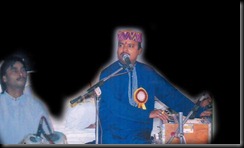 Vidyapati Sangeet of Bihar is based on the love songs of Vidyapati, a fourteenth century poet, composed in Maithili, a regional language of Bihar in Eastern India. His songs treat Radha and Krishna as ideal lovers, and their love, being the theme of the classical Vaishnava poems, is essentially romantic in nature. Vidyapati's songs depict the unenjoyed pleasure of love and romance which apparently seem to be sensuous and sensual, but there is a touch of fine, delicate supramundane love which never comes under the surveillance of the casual readers of romantic taste. A true devotee of Krishna, who has ‘exclusive love' in his heart, never senses any sensuality in Vidyapati's love songs. Vidyapati is considered to be the pioneer in introducing lyricism in poems composed in a regional language. His Padavali is a temple of cadence, where the duly regulated rise and fall of voice makes one oblivious of himself. Because of this musical quality, the songs in his Padavali are very popular in India, especially in his native state Bihar. These have become folk songs in Mithila only due to this lyrical quality. Vidyapati's songs are sung with different ragas and talas and fully imbibe the atmosphere of classical music.
Vidyapati Sangeet of Bihar is based on the love songs of Vidyapati, a fourteenth century poet, composed in Maithili, a regional language of Bihar in Eastern India. His songs treat Radha and Krishna as ideal lovers, and their love, being the theme of the classical Vaishnava poems, is essentially romantic in nature. Vidyapati's songs depict the unenjoyed pleasure of love and romance which apparently seem to be sensuous and sensual, but there is a touch of fine, delicate supramundane love which never comes under the surveillance of the casual readers of romantic taste. A true devotee of Krishna, who has ‘exclusive love' in his heart, never senses any sensuality in Vidyapati's love songs. Vidyapati is considered to be the pioneer in introducing lyricism in poems composed in a regional language. His Padavali is a temple of cadence, where the duly regulated rise and fall of voice makes one oblivious of himself. Because of this musical quality, the songs in his Padavali are very popular in India, especially in his native state Bihar. These have become folk songs in Mithila only due to this lyrical quality. Vidyapati's songs are sung with different ragas and talas and fully imbibe the atmosphere of classical music.
Vidyapati sangeet is being sung by Kunj Bihari Mishra. Kunj Bihari Mishra is a singer of the Mithila region of Bihar who presents traditional and folk songs with a touch of classical music. He is a well-known exponent of Vidyapati Sanget and has performed widely across India. The accompanying artists are: Govind Bihari Mishra – Vocal Support, Chandra Mohan Mishra – Vocal Support, Sajjan Kumar Jha – Jhallar, Parshuram Singh – Pakhawaj, Ashok Yadav – Dholak, Mithleash Mandal – Manjeera, and Arun Kumar Mallick – Tanpura.
SOPANA SANGEET OF KERALA
Presented by Kavalam Srikumar
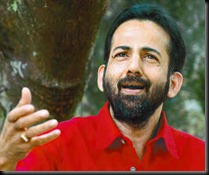 Sopana Sangeet literally means the music sung at the sanctum sanctorum of the temple. It has a wider connotation signifying the traditional music of Kerala, as it presents the regional ethos.
Sopana Sangeet literally means the music sung at the sanctum sanctorum of the temple. It has a wider connotation signifying the traditional music of Kerala, as it presents the regional ethos.
In its musical form per se, it is preserved in the temples to accompany the rituals. This is known as Kotti Padti Seva. Apart from the pure musical form, it assumes its visual linkage in Kalamezhuthupattu (the music describing the figure of the Goddess Kali on the floor, made with powder in five natural colours).
Sopana music in its applied form emerges into different dimensions and its specialties are varied according to the synergic requirements of each discipline. It ranges from Mudiyettu (ritual drama) to Kathakali through Krishnattam and Mohiniyattam.
The form with all the variations in applications postulates certain basic tenets which find a legitimate place for it as an organic system which justifies the essential inter-relationship of the kinetics related to the audio-visual tradition of the region.
Sopana Sangeet is being performed by Kavalam Sreekumar. He has performed in prestigious festivals in India and abroad. Winner of many awards, he has lent his voice to many Malayalam films also.
8.45 Meghdoot I (Entry free)
MUSIC ENSEMBLE ‘Dance of the Dessert’
Presented by Kamal Sabri & Group
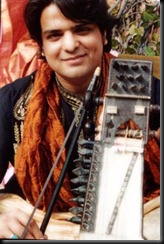
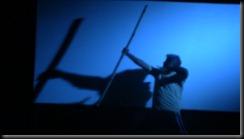 His presentation is based on verses from “A City’s Death by Fire” by Derek Walcott from St. Lucia. The presentation is about the repercussions of anger and hatred, its impact on culture, on people of every faith and belief. Yet, there is a silver lining, of the ability of the human being to reinvent himself and create a bright future from the very embers that burnt down everything
His presentation is based on verses from “A City’s Death by Fire” by Derek Walcott from St. Lucia. The presentation is about the repercussions of anger and hatred, its impact on culture, on people of every faith and belief. Yet, there is a silver lining, of the ability of the human being to reinvent himself and create a bright future from the very embers that burnt down everything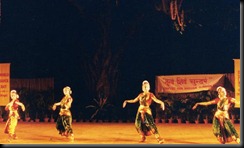 Bharatanatyam of Tamil Nadu in southern India has grown out of the art of dancers dedicated to temples, and was earlier known as Sadir or Dasi Attam. It is the first of India's traditional dances to be refashioned as a theatre art and to be exhibited widely both at home and abroad. Bharatanatyam rests on principles of performance and an aesthetics set down in classics such as Bharata's Natyashastra. It has a rich repertoire of songs in Telugu, Tamil and Sanskrit. Bharatanatyam has a highly evolved language of nritta, abstract dance, and nritya which unfolds the narrative. The themes have a wide range spanning human and divine love, and are generally classed under the rubric of shringara (romantic love) and bhakti (devotion). The music of Bharatanatyam belongs to the Carnatic system of southern India.
Bharatanatyam of Tamil Nadu in southern India has grown out of the art of dancers dedicated to temples, and was earlier known as Sadir or Dasi Attam. It is the first of India's traditional dances to be refashioned as a theatre art and to be exhibited widely both at home and abroad. Bharatanatyam rests on principles of performance and an aesthetics set down in classics such as Bharata's Natyashastra. It has a rich repertoire of songs in Telugu, Tamil and Sanskrit. Bharatanatyam has a highly evolved language of nritta, abstract dance, and nritya which unfolds the narrative. The themes have a wide range spanning human and divine love, and are generally classed under the rubric of shringara (romantic love) and bhakti (devotion). The music of Bharatanatyam belongs to the Carnatic system of southern India. 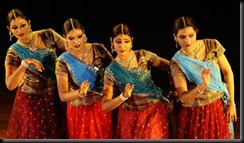 Kathak is the principal dance of northern India, widely practised in Uttar Pradesh, Rajasthan, Delhi, Madhya Pradesh, and parts of western and eastern India . Expanding and refining its movement and vocabulary of expression, this art possibly transited to a courtly milieu in medieval India, and achieved its finest flowering under Mughal rule. Later, in the nineteenth century, the princely courts at Lucknow, Jaipur, Raigarh, and other places emerged as leading centres of Kathak dance.
Kathak is the principal dance of northern India, widely practised in Uttar Pradesh, Rajasthan, Delhi, Madhya Pradesh, and parts of western and eastern India . Expanding and refining its movement and vocabulary of expression, this art possibly transited to a courtly milieu in medieval India, and achieved its finest flowering under Mughal rule. Later, in the nineteenth century, the princely courts at Lucknow, Jaipur, Raigarh, and other places emerged as leading centres of Kathak dance. As Kotwal, Ghasiram indulges in high-handed acts of vengeance. He becomes a tyrant for his foes, the Brahmins of Pune. Nana remarries for the seventh time and his new wife is but 12 years old. This shocks Ghasiram. His burning desire to take revenge crosses all limits. Some Brahmins who were alleged to have stolen some fruits are imprisoned in a small room, where a few of them die of suffocation. The Brahmins raise the banner of revolt against the Kotwal. Now Nana also wants to get rid of Ghasiram. Nana orders that Ghasiram be paraded through the city and hanged. After the cold-blooded killing of Ghasiram, Nana delivers a highly charged speech, thus remaining at the centre of affairs in the play.
As Kotwal, Ghasiram indulges in high-handed acts of vengeance. He becomes a tyrant for his foes, the Brahmins of Pune. Nana remarries for the seventh time and his new wife is but 12 years old. This shocks Ghasiram. His burning desire to take revenge crosses all limits. Some Brahmins who were alleged to have stolen some fruits are imprisoned in a small room, where a few of them die of suffocation. The Brahmins raise the banner of revolt against the Kotwal. Now Nana also wants to get rid of Ghasiram. Nana orders that Ghasiram be paraded through the city and hanged. After the cold-blooded killing of Ghasiram, Nana delivers a highly charged speech, thus remaining at the centre of affairs in the play.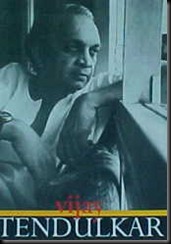

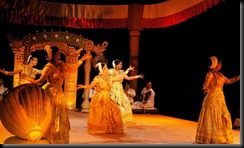

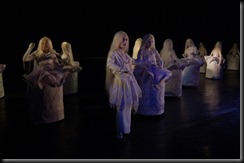
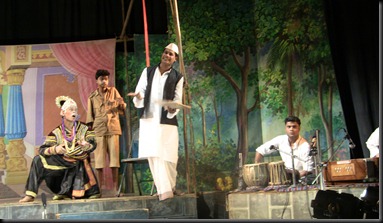
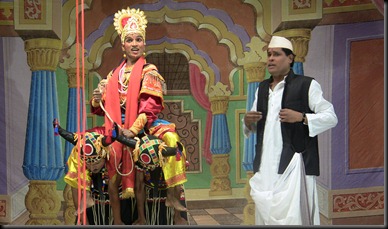
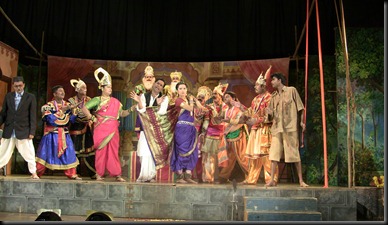
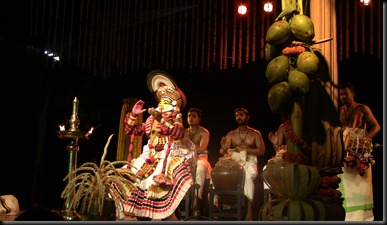
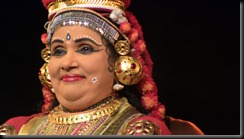
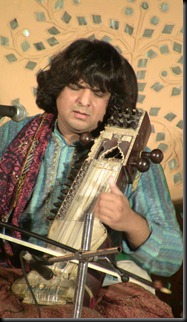









![Sadarame_--_PhotographybyAkshayNarayan_small[1] Sadarame_--_PhotographybyAkshayNarayan_small[1]](http://lh5.ggpht.com/_npaJAo2b8ec/TLGmfFGL5eI/AAAAAAAAAgg/AWad96-YLGg/Sadarame_--_PhotographybyAkshayNarayan_small%5B1%5D_thumb%5B2%5D.jpg?imgmax=800)
